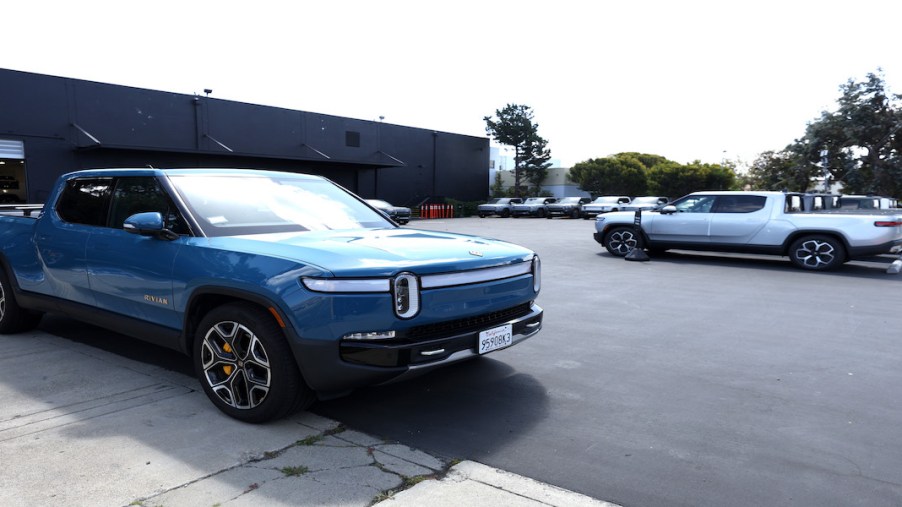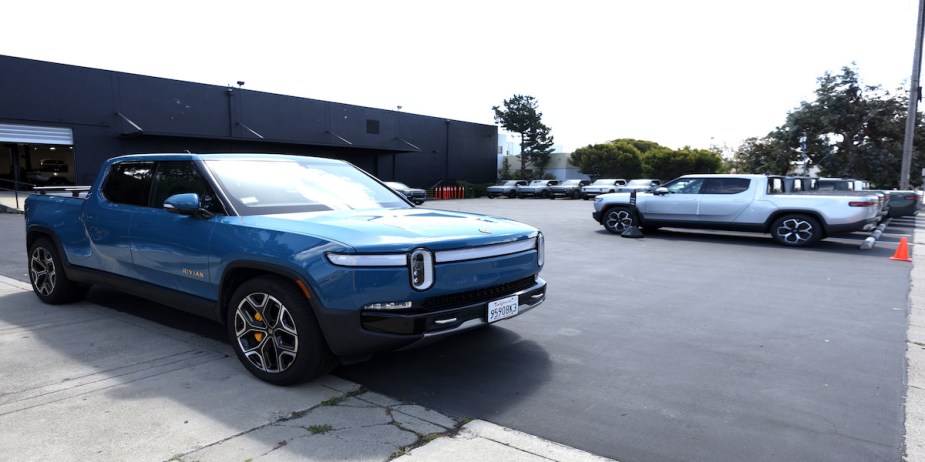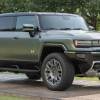
Rivian R1T Went 60 Miles Further Using These Tires According to Car and Driver’s Test
Many prospective EV owners aren’t quite ready to make the switch because of range anxiety. Many current EV owners suffer from it, overly conscious of their battery life and driving range while keeping their eyes peeled for every little tip or trick that can keep them on the road as long as possible. Well, if you’re on the cusp and considering a Rivian R1T, one trick can keep you on the road for sixty miles longer than advertised.
Why consumers are increasingly moving to EVs

Though automotive manufacturers have been experimenting with electric cars for more than a century, viable mass-market EVs have only been around since the mid-Nineties. And even with the relatively early success of the Nissan Leaf in 2011, Tesla’s massive popularity cracked the EV market wide open. Coupled with increasing consumer awareness of and sensitivity to climate change and a changing environmental regulatory field, EVs don’t just have a foothold in the automotive market. They are the future of the auto industry.
Automakers worldwide have announced plans to electrify their fleets in the coming years. Some plan to replace up to half of their fleets with hybrids and EVs, while others plan to stop manufacturing gas-powered vehicles altogether. And governments across the globe are helping fund this shift with subsidies for EV manufacturers and buyers alike. There are also funds set aside for companies building charging infrastructure, especially in underserved areas, across the U.S. and many other nations.
The shift to EVs isn’t limited to consumer vehicles. Commercial fleet operators are also pursuing electrification as well. And even other vehicle manufacturers are getting into the mix. As per Electrek, companies are testing electric planes, boats, motorcycles, and even surfboards.
As manufacturers build out their electric vehicle production capacity and reduce their gas-powered vehicle operational capacity, they’ll hit a point where producing the latter is no longer profitable. And when the money lies solely in EVs, you’ll become increasingly hard-pressed to find gas-powered vehicles.
What is range anxiety?
Perhaps the most significant barrier to the mass adoption of EVs is the state of national infrastructure. Range anxiety is a phenomenon afflicting both prospective and current EV owners alike. It refers to the worry drivers feel that they may be stranded on the road when the battery in their EV dies. And it’s not an unreasonable fear. Charging stations are not yet as ubiquitous as gas stations and are particularly sparse in certain regions of the country.
For drivers in many urban areas, range anxiety is increasingly baseless, as cities have been quicker to establish charging stations than the suburbs or rural areas. But for those outside cities or who must travel long distances frequently, the lack of charging stations can present a real obstacle. Now there are both mobile charging stations in operation and portable charging devices that drivers can use to ensure they aren’t stranded.
But there’s also been a lot of spilled ink in mainstream publications and online about EVs with lower than expected driving range, drivers whose batteries die on the road, broken charging stations, and other related issues that leave drivers scrambling. And regardless of how many drivers have routinely faced these challenges, these stories help fuel the perception that EVs are still not ready for primetime among the gas guzzler set.
How you can maximize the Rivian R1T’s range capacity
If you’re looking for a good EV pickup, you’ll likely be pleased with the 2022 Rivian R1T. As per Car and Driver, the Rivian, which starts at $68,575, is EPA-rated for an impressive 314 miles of range with its “Large” battery pack. While this is the only option for the 2022 model, a smaller version and a “Max” version are expected for the 2023 version. But the “Large” battery pack is 128.9 kWh, and along with a quad-motor set up and AWD, the Rivian generates a whopping 835 hp and can hit 60 mph in just 3.3 seconds.
Those figures are impressive all on their own. And Car and Driver have plenty of favorable things to say about the interior, including praise for its 16.0-inch infotainment screen, intuitive controls, styling, and cargo space.
When Car and Driver tested the R1T, it fell far short of the expected 314 miles of range, with just 220 miles with all-terrain tires. However, a subsequent test with 22-inch all-season street tires gave testers 280 miles of range. And while you may prefer or need all-terrains for the driving you plan to do, keep in mind you can get a lot more mileage out of all-season street tires with the R1T. And 280 miles of distance on a single charge should be enough to quell most folks’ range anxiety.


